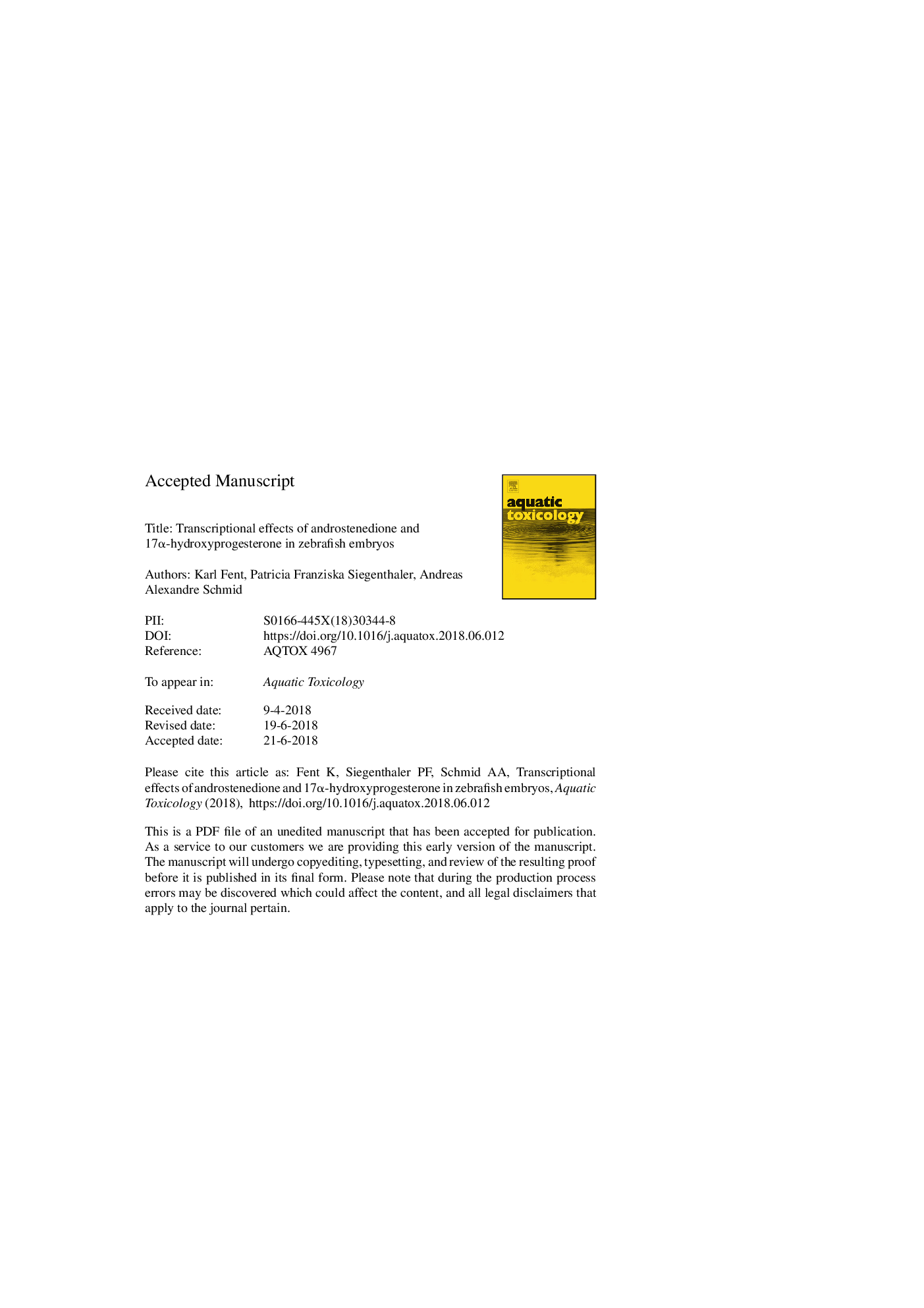| Article ID | Journal | Published Year | Pages | File Type |
|---|---|---|---|---|
| 8883658 | Aquatic Toxicology | 2018 | 15 Pages |
Abstract
Steroid hormones in the aquatic environment may pose a risk to fish health. Here we evaluated effects of two different class steroids that frequently occur in the aquatic environment, the androgen androstenedione (A4) and the progestin 17α-hydroxyprogesterone (17-OHP4). Zebrafish embryos were exposed to four concentrations of A4 and the positive control testosterone and to 17-OHP4, and transcriptional changes were determined at 96â¯h post fertilization (hpf) and 120 hpf. Transcriptional changes of 18 selected genes were assessed upon exposure to measured concentrations of 0.004, 0.046, 0.62 and 6.56 μg/L A4. Significant induction of the genes encoding sulfotransferase (sult2st3) and aromatase (cyp19b) occurred in 120 hpf embryos at 6.56 μg/L A4 and 1 μg/L testosterone. Additionally, cyp2k7 was significantly induced in two of three independent experiments. 17-OHP4 did not induce physiological effects (muscle contraction, heart rate, hatching success, swimming activity) at concentrations between 0.01 and 10 μg/L. Of the analyzed 15 genes, slight transcriptional alterations occurred for the genes encoding progesterone receptor, aromatases (cyp19a) and (cyp19b) and cyp2k7 at 10 μg/L. Our study highlights sult2st3, cyp19b and cyp2k7 as potential markers of androgen exposure in fish and indicates that 17-OHP4 is not likely to pose a risk for fish at environmental concentrations.
Related Topics
Life Sciences
Agricultural and Biological Sciences
Aquatic Science
Authors
Karl Fent, Patricia Franziska Siegenthaler, Andreas Alexandre Schmid,
